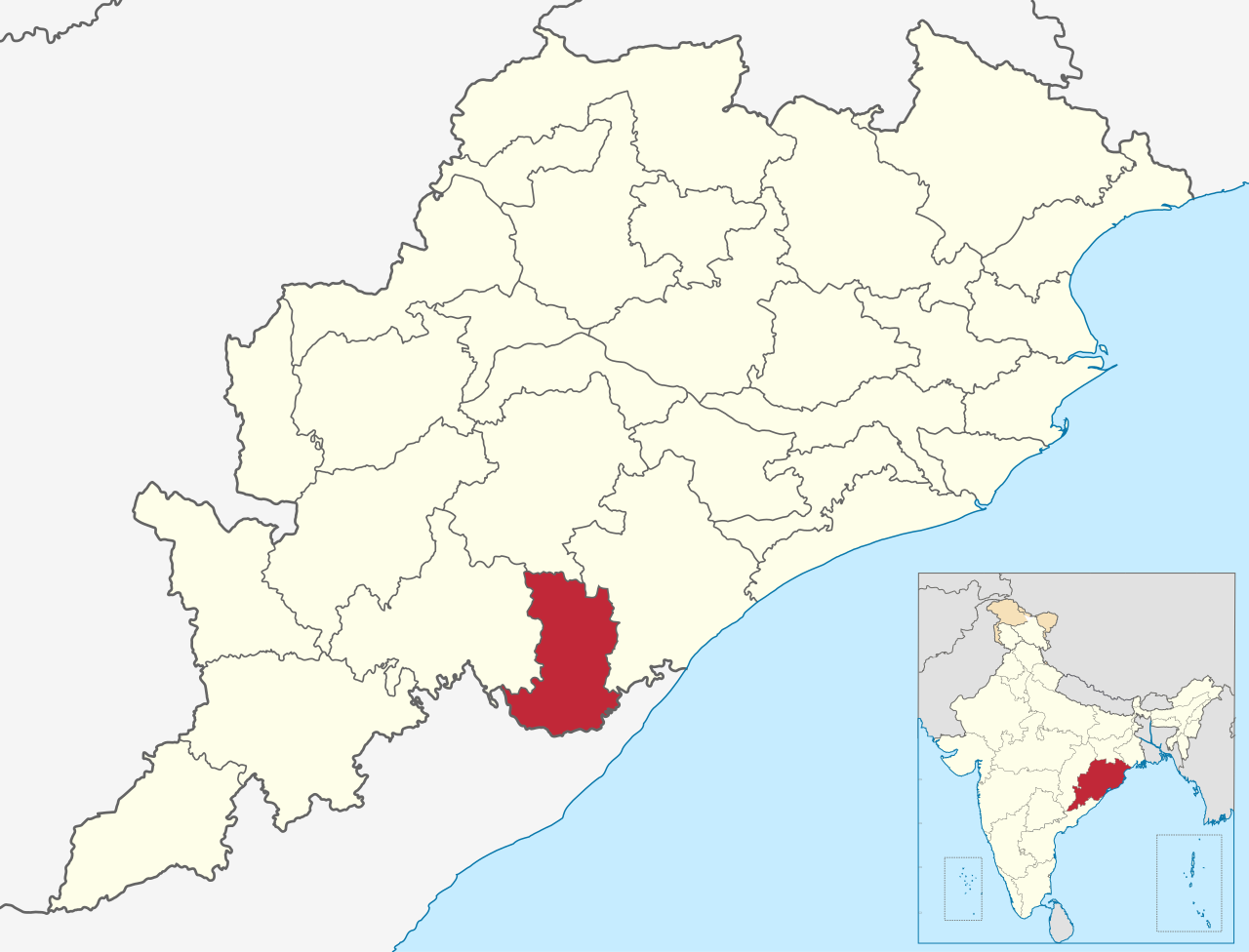Gajapati District
Gajapati is a district of Odisha, India. It was created from Ganjam District in October, 1992. Gajapati district was named after Maharaja Sri Krushna Chandra Gajapati Narayan Dev, the Raja Sahib of the Paralakhemundi estate (the first Prime Minister of the state), who is remembered for his contribution in the formation of a separate state, and inclusion of the Paralakhemundi estate in Odisha. The district headquarters at Paralakhemundi, formerly a princely estate, has been clustered within a radius of approximately 5 kilometers around the geometric centre of Paralakhemundi. The District is a part of the Red Corridor.

The climate is subtropical with high humidity. Summer season is between March to mid-June and is extremely hot with the temperature reaching 46 °C. Winter season is mild and temperature can fall lowest to 9 °C November to February. The rainy season lasts between mid-June to mid-October and it receives approximately 1000 mm of rainfall primarily from the southwest monsoons.
In 2006 the Ministry of Panchayati Raj named Gajapati one of the country’s 250 most backward districts (out of a total of 640). It is one of the 19 districts in Odisha currently receiving funds from the Backward Regions Grant Fund Programme (BRGF).
According to the 2011 census Gajapati district has a population of 577,817, roughly equal to the nation of Solomon Islands[12] or the US state of Wyoming. This gives it a ranking of 533rd in India (out of a total of 640).
The district has a population density of 133 inhabitants per square kilometre (340/sq mi). Its population growth rate over the decade 2001-2011 was 10.99%. Gajapati has a sex ratio of 1042 females for every 1000 males, and a literacy rate of 54.29%.
At the time of the 2011 Census of India, 41.51% of the population in the district spoke Odia, 34.49% Sora, 15.53% Telugu and 5.54% Kui as their first language.
READ was originated from Gajapati district of Odisha in the year 1993. The socio-economic, health, education condition of the people was despondent. Some energetic youth of the time had organised themselves and had started working on the issues. They had started with adult education and balwadi education. Later on it was legally registered under societies registration act. Slowly the work and area was expanded to 4 districts now. READ is now mainly focusing on Dalit, Tribal women empowerment in the district.

